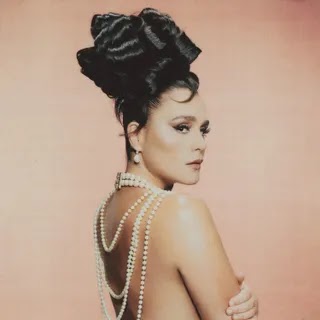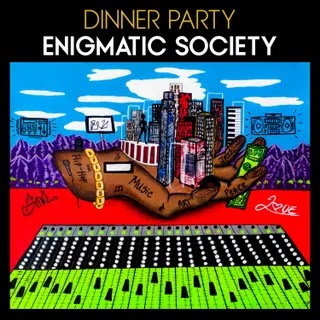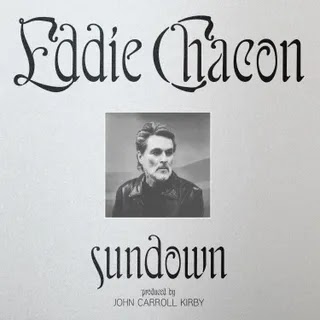Today on Pitchfork, we are taking a critical look at the UK band Sade—from quiet storm mainstays to defining a generational vibe—with new reviews of four of their records.
In 1984, while British new romantics like Duran Duran and Spandau Ballet filled arenas with enormous synth-pop, Sade became the minimalists, crafting quiet, vintage soul out of basic components. Their end product, Diamond Life, values brevity. The band had a weapon in lead singer Helen Folasade Adu—Sade for short—a modest contralto who wore hoops with a classic red lip and moved in silence like Carmen Sandiego. Despite early comparisons to the likes of Billie Holiday and Nina Simone, Sade, then 25, saw not jazz but Black American soul as her band’s core influence. “I’m frightened of anyone for one minute thinking that we’re trying to be a jazz band, because if we were, we could do it a lot better than we’re doing now,” Sade said in 1985. “Our music is clearly pop, because it’s easy to understand.”
More precisely, their sound liquified soul and jazz into new-school pop. They were executors of spaciousness. With Diamond Life, Sade produced feeling music that became a prototype for a generation of singers who favored naked elegance: D’Angelo, Jill Scott, Alicia Keys. Maxwell later borrowed guitarist, saxophonist, and co-writer Stuart Matthewman for his own immaculate 1996 debut Urban Hang Suite; and Drake once equated the “dark sexy feel” of Sade’s records to those on his mixtape So Far Gone. The seductive undertones of artists like Tinashe and Yuna are similarly tethered to Sade, whose fierce dashes of sensuality originated here.
Over nine tracks, Sade sings of unwanted separation and missed connections under the banner of “quiet storm” music, the nickname for mood-setting, after-hours R&B that powered adult contemporary radio. Washington’s WHUR-FM is said to have originated the format in 1976 in response to radio programming that featured predominantly white easy listening acts. Quiet storm was, in contrast, a platform for balladeers like Anita Baker and Luther Vandross and their mellow grade of soul. For Sade, a band that conveyed turbulence even in their subtlety, the label fit. The swagger of “Smooth Operator,” their breakout U.S. single, almost overshadows the fact that the subject’s task is to travel across state lines breaking hearts. Their album, for the most part, seeks out and cherishes serenity and stability in partnerships while acknowledging the rocky parts. Lead U.S. single “Hang On to Your Love,” a stylish, midtempo number, views commitment as a courageous act, and on “Your Love Is King,” Sade drags out her prose, praising ordinary love between the exhales of a sax. The song has all the romance of a shimmering sunset gondola ride.
Born in Ibadan, Nigeria, Sade moved to England at 4 with her mother and brother. As early as 14, she began hitting nightclubs, and by the mid-’80s, the former art student turned menswear designer was casually experimenting as a backup vocalist in the seven-piece funk band Pride. Sade and Matthewman then morphed into a slicker breakout known collectively as Sade (a band name suggested by the singer herself), with Sade as their lead singer, keyboardist Andrew Hale, and bassist Paul S. Denman.
At the time, Sade was living in a deserted fire station, where she and Matthewman would listen to her collection of soul records, from Curtis Mayfield to Nina Simone. When band manager Lee Barrett began shopping a demo featuring “Smooth Operator” and “Your Love Is King”—material they’d been performing in clubs across England—producer Robin Millar said label execs dismissed their songs as “too slow, jazzy, and too long.” Next to the electro-pop of that era, Sade read as desperately tender, which proved to be an asset. The band eventually landed a deal with Epic in 1983 and issued Diamond Life the following year.
As with other idols whose enigma was part of their appeal, Sade practically invented the artist hiatus, taking years-long breaks between records, trading celebrity for freedom and longevity. She was, by all accounts, the coolest in everyone’s orbit. Tom Hanks, who appeared with Sade on Saturday Night Live in 1985, told The New York Times, “Calling her elusive or mysterious might color her as unkind or remote. She was not that. She was, rather, just very comfortable in the command of her art, as well as her presence.” Sade communicated gravity, often amid a cascade of keys and gentle sax riffs suspended in the air. Her voice entered the room like a chill. But her strength was in her ability to render truth and desire concisely. In relaying the sensation of a physical rush on “Your Love Is King,” she sings, “You’re making me dance…” and pauses before settling the emotion: “…Inside,” stretching its syllables into eternity.
The tracks on Diamond Life play in the arena of blues because Sade sought inspiration in the love stories of soul music that centered everyday people. On Diamond Life, she’s still refining her narrative voice, so the allegory in a cut like “Sally,” a sauntering tour through “one angry day in New York,” about the Salvation Army, has good intentions, but it’s the rare Sade song that offers the pretense of sentimentality in lieu of the real thing. The working-class anxieties that became a thread in their music materialize on “When Am I Going to Make a Living,” a song Sade wrote on the back of a receipt from the cleaners one night during a downpour.
Even when the lounginess is laid on thick, the album’s tones are subdued enough to be affecting. The damp ambiance of songs like “Frankie’s First Affair” and the six-plus-minute “Cherry Pie” burn like the type of molten soul expected to backdrop a film noir. While the track billows and tapers, becoming more atmospheric than dynamic by the end, Sade’s debut is a strong compilation of stories that bristle with simplicity.
















0 comments:
Post a Comment